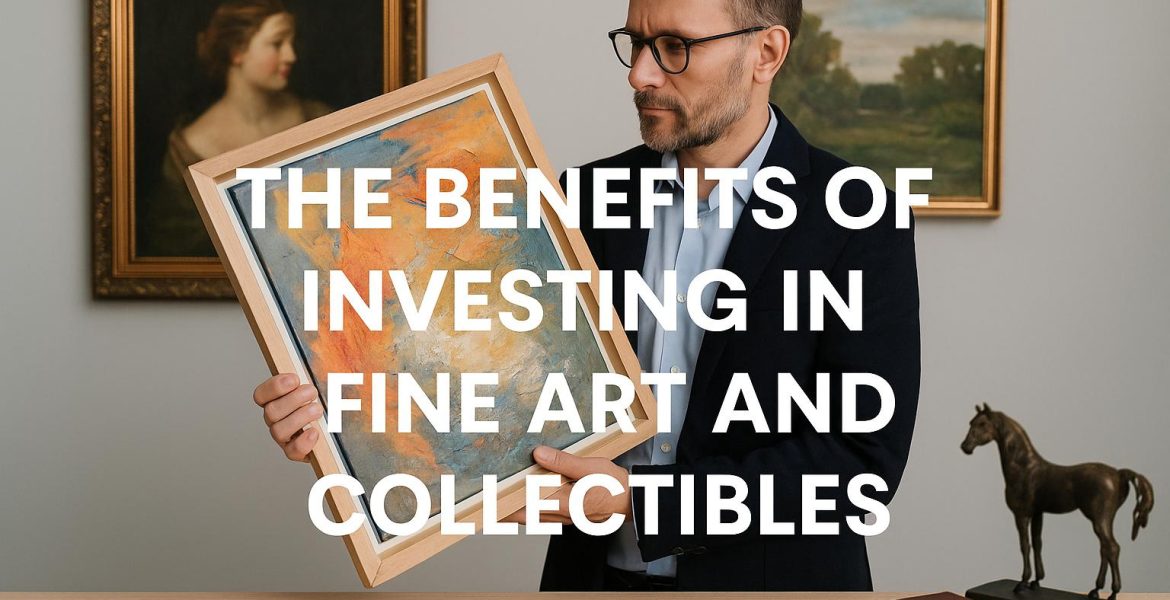
The Benefits of Investing in Fine Art and Collectibles
admin - September 25, 2025The Benefits of Investing in Fine Art and Collectibles
Investing in fine art and collectibles is a strategy that has attracted the attention of individuals seeking unique opportunities to diversify their investment portfolios. This approach to investing offers its own distinct set of advantages, each of which holds the potential to be transformative for prospective investors. Understanding these benefits is vital for anyone considering entering this intriguing market.
Potential for High Returns
Among the most significant attractions of investing in fine art and collectibles is the potential for high returns. Over recent decades, various works of art have seen substantial appreciation in their market value. Historical data from notable auction houses, such as Christie’s Auction House, illustrates that paintings purchased for comparatively modest sums have, over time, evolved into valuable assets worth several times their original purchase price. This potential for extraordinary returns continues to fuel ongoing interest in art as an investment class.
However, this potential must be weighed against inherent risks. The art market can be unpredictable, and not every piece will appreciate. As such, prospective investors are encouraged to conduct due diligence, perhaps even consulting experts or art historians to identify pieces with the highest potential for appreciation.
Diversification of Portfolio
The ability to diversify investment portfolios is another compelling advantage offered by art and collectibles. Unlike traditional investments such as stocks and bonds, art and collectibles often do not track the same economic cycles. They tend to operate independently from the fluctuations of financial markets, thus offering an alternative avenue to hedge against overall market volatility. For investors aiming to minimize the risks associated with more conventional financial instruments, art can provide a valuable diversification benefit.
This unique characteristic is particularly appealing in markets rife with instability. The relative detachment of art values from broader economic trends can act as a stabilizer within an investor’s broader portfolio—a quality that sets art apart from other investment categories.
Tangible Asset with Intrinsic Value
Unlike many financial products that exist only in digital or paper formats, art and collectibles represent a very tangible asset. These are physical items that hold intrinsic value simply by being works of creativity and craftsmanship. Possessing such items offers a sense of ownership that goes beyond mere numerical valuations. Collectibles, whether they be vintage wines, rare coins, or historic artifacts, can be touched, displayed, and appreciated for their beauty and craftsmanship.
The pleasure derived from owning such items often transcends their monetary worth. This dual benefit of enjoying a collectible while it potentially appreciates in value is one of the unique attractions of this investment form. Investors can gain personal enjoyment and aesthetic pleasure alongside financial growth.
Cultural and Historical Significance
Many art pieces and collectibles are imbued with deep cultural and historical importance. Works of art from prominent artists or pieces from significant historical periods often carry stories and contexts that enrich their value. This cultural depth presents more than just an investment opportunity; it offers educational prospects and a chance to connect with human history in a tangible form.
Such items often hold or increase their market value due to their cultural significance. Their importance extends beyond financial appreciation, allowing owners to become custodians of cultural heritage, which in itself can be rewarding. This cultural dividend is a non-monetary return on investment cherished by collectors and investors who value art’s broader impact.
Tax Advantages
Investing in art can also provide notable tax advantages. For instance, donating artwork to museums or charitable institutions can lead to potentially significant tax deductions. Furthermore, strategic art investments can be advantageous for estate planning, aiding in the management of inheritance taxes or offering a crafted legacy that may also provide financial benefits.
These advantages can make art an appealing investment from a financial planning perspective, encouraging the integration of art into larger financial strategies. However, it is vital for investors to consider the complex tax implications and consult with tax professionals to maximize these benefits fully.
Conclusion
In summary, investing in fine art and collectibles offers numerous benefits, ranging from potential high returns and enhanced portfolio diversification to the joy of owning culturally and historically significant assets. Such investments provide varied dividends, blending aesthetic and intellectual enjoyment with financial incentives. However, like all investments, thorough research and consultation with field experts are pivotal to navigate this picturesque yet complex market effectively. By appreciating the unique advantages art and collectibles offer, savvy investors can enrich and diversify their portfolios with assets that possess enduring value beyond their monetary worth.
This article was last updated on: September 25, 2025
